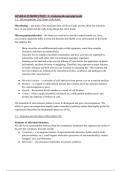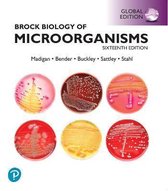Resume
Summary Brock Biology of Microorganisms, Global Edition - Microbiology AB_1276 (AB_1276)
- Cours
- Établissement
- Book
In-depth summary Brock Biology of Microorganisms and lecture slides for Microbiology AB_1276. Contains all the necessary information for preparation for a test. If you just read this, then there is no need to read the book or the slides to prepare well for the exam.
[Montrer plus]




